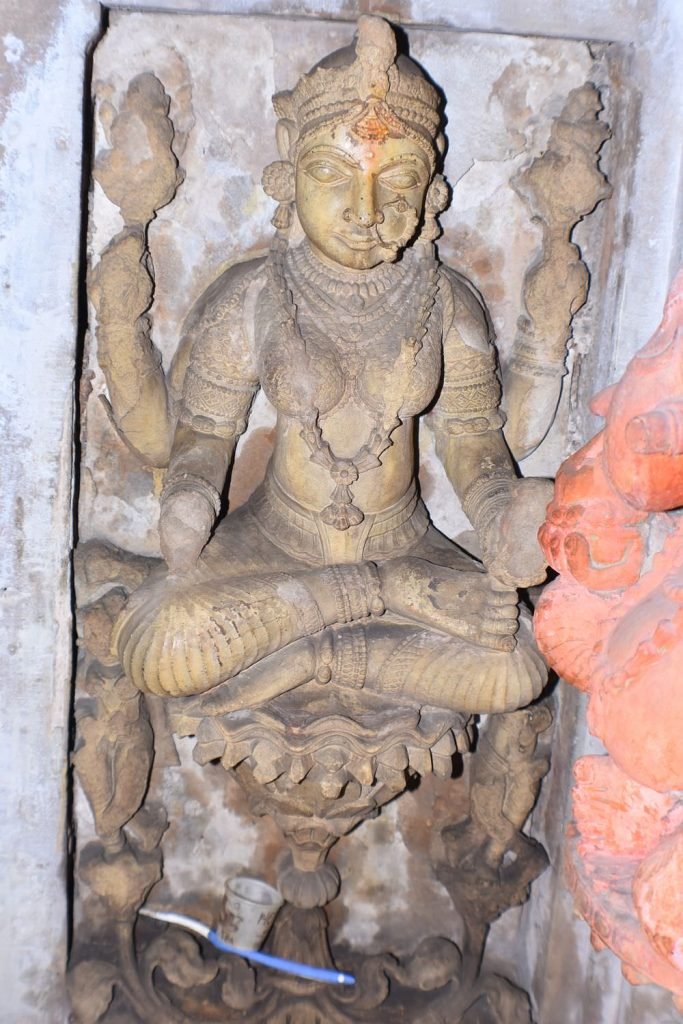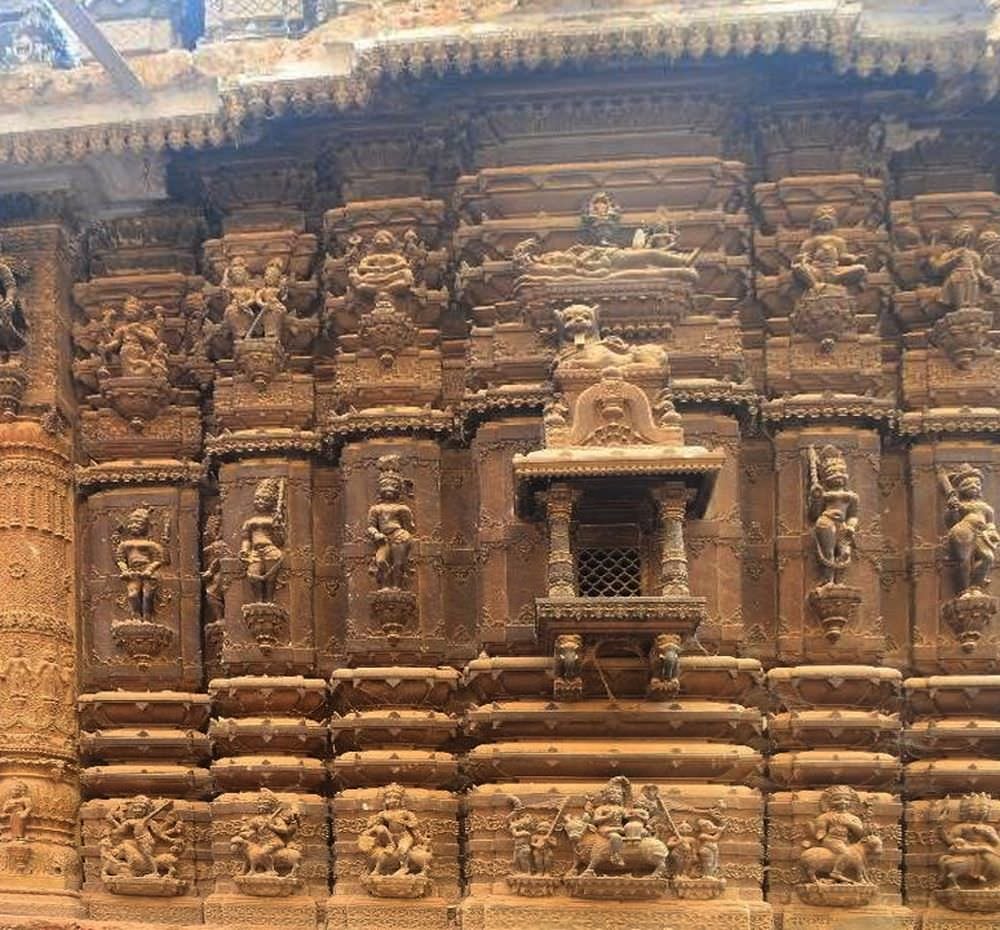The square mandapa is supported by four highly ornate pillars (stambhas). A four-tiered pyramidal superstructure (shikhara) called phamsana, surmounts the hall. The lower three tiers are decorated with kumbha motifs while the topmost tier is composed of a square, stepped structure, decorated with knotted serpents in the center of each face. Above this, rests a broad platform from which rise elaborate crowning elements, comprising amalakas, padmas which are topped with finials of kalasha and bijapuraka which appear to be made of metal.
The front pillars of the mandapa have square bases with four moldings with diaper, lotus petal and bead patterns. The fourth and topmost moulding is plain. The shafts emerge from purnakumbhas that rest on inverted bell-shaped bases, both of which are covered entirely with ornate acanthus leaf motifs. The pillar shafts are of a mixed type, first octagonal in cross-section and then circular to support a kumbha capital. The entire shaft is covered with sculptural decoration. The octagonal section of the shaft has alternating male and female figures holding hands, probably a representation of rasleela as the male figure looks like Krishna with headgear decorated with peacock feather. There are many other small figures on the pillars that add to the complex iconographic programme of the temple.
It is because of prominent kumbha ornaments at various places that the temple is known as Kumbha Mahadev. Above the capital of each pillar, is a square abacus from which sprout brackets in the form of bharavahakas and apsaras. The rear pillars of the mandapa share a base with the pilasters of the antarala. In ornamentation, they are similar to the front pillars.
Inside the square mandapa is a domed ceiling that rises from a dodecagonal base that gradually transforms to a circular shape. The zone of transition has large sculptures of Lord Krishna in rasleela with gopis. Rasleela is a recurring theme in the Kumbha Mahadev temple. The soffit (vitana) of the dome has a lotus ornament.
























